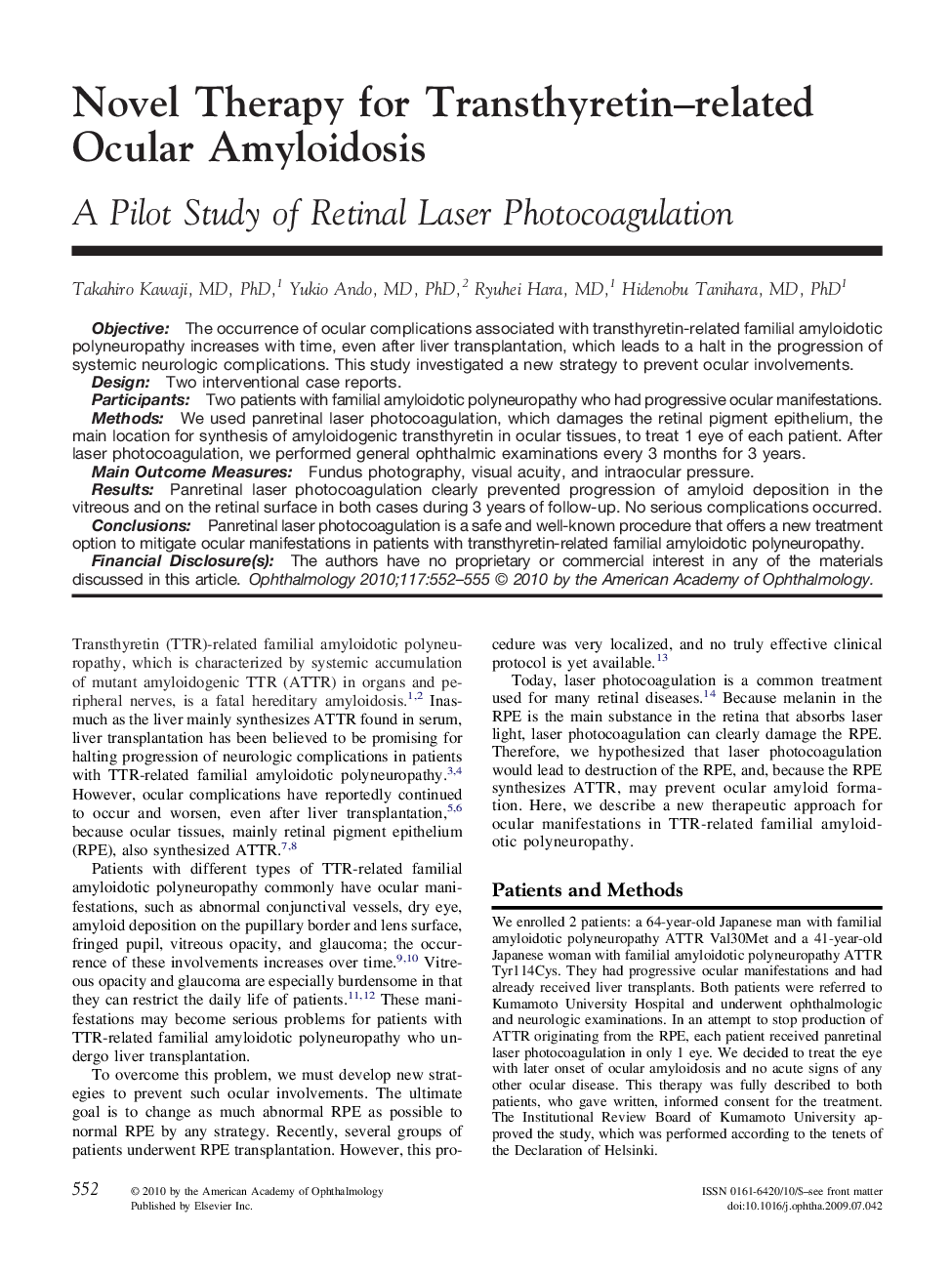| کد مقاله | کد نشریه | سال انتشار | مقاله انگلیسی | نسخه تمام متن |
|---|---|---|---|---|
| 4028564 | 1262483 | 2010 | 4 صفحه PDF | دانلود رایگان |

ObjectiveThe occurrence of ocular complications associated with transthyretin-related familial amyloidotic polyneuropathy increases with time, even after liver transplantation, which leads to a halt in the progression of systemic neurologic complications. This study investigated a new strategy to prevent ocular involvements.DesignTwo interventional case reports.ParticipantsTwo patients with familial amyloidotic polyneuropathy who had progressive ocular manifestations.MethodsWe used panretinal laser photocoagulation, which damages the retinal pigment epithelium, the main location for synthesis of amyloidogenic transthyretin in ocular tissues, to treat 1 eye of each patient. After laser photocoagulation, we performed general ophthalmic examinations every 3 months for 3 years.Main Outcome MeasuresFundus photography, visual acuity, and intraocular pressure.ResultsPanretinal laser photocoagulation clearly prevented progression of amyloid deposition in the vitreous and on the retinal surface in both cases during 3 years of follow-up. No serious complications occurred.ConclusionsPanretinal laser photocoagulation is a safe and well-known procedure that offers a new treatment option to mitigate ocular manifestations in patients with transthyretin-related familial amyloidotic polyneuropathy.Financial Disclosure(s)The authors have no proprietary or commercial interest in any of the materials discussed in this article.
Journal: Ophthalmology - Volume 117, Issue 3, March 2010, Pages 552–555